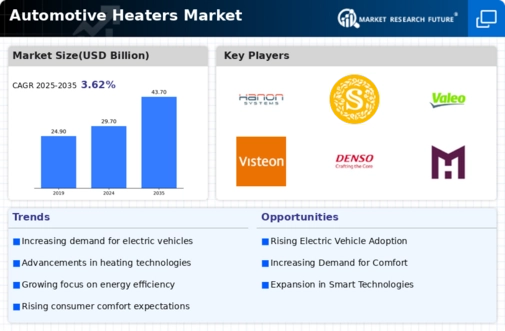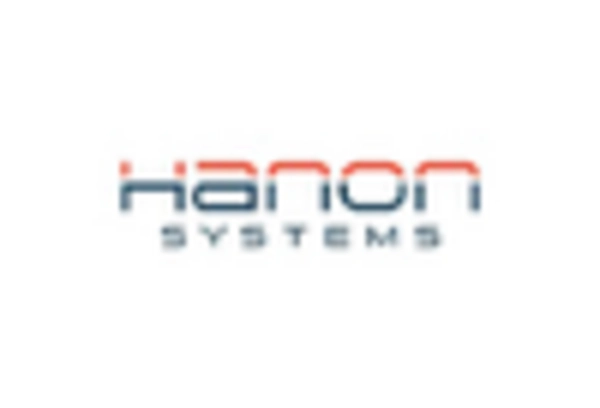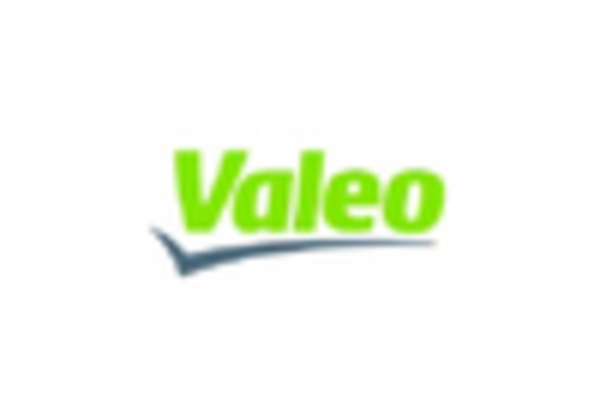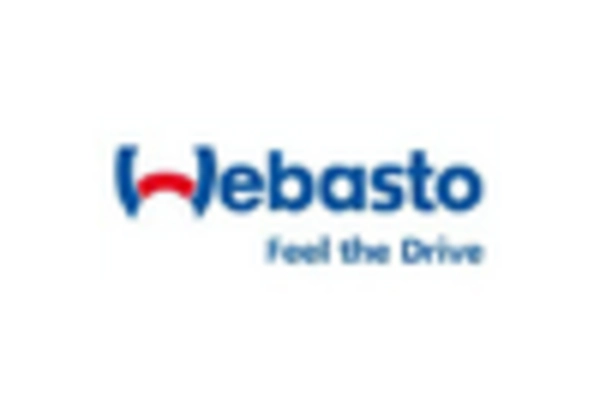The Automotive Heaters Market is characterized by a dynamic competitive landscape driven by the evolving needs of vehicle manufacturers and consumer preferences for efficiency and comfort. As the automotive industry continues to adapt to stringent environmental regulations and the shift towards electric vehicles, the demand for advanced heating solutions has increased significantly.
This market includes a range of products such as engine heating systems, cabin heaters, and seat heaters, all of which play crucial roles in enhancing user experience and vehicle performance.
Competitive insights reveal that innovation, technological advancements, and strategic partnerships are key factors that companies are leveraging to maintain their market position and capitalize on emerging opportunities.
The growing emphasis on fuel efficiency and sustainability is pushing manufacturers to develop more sophisticated, lightweight, and energy-efficient heating systems, contributing to a highly competitive environment.
Hanon Systems is a prominent player in the Automotive Heaters Market, recognized for its comprehensive portfolio of thermal management solutions. The company has established a strong market presence by focusing on innovative technologies that optimize thermal efficiency and enhance interior comfort in vehicles.
With a commitment to sustainability and reducing the environmental impact, Hanon Systems has developed advanced heating solutions that cater to both traditional internal combustion engine vehicles and the growing segment of electric and hybrid vehicles.
The company's emphasis on research and development enables it to stay at the forefront of market trends, providing technologically advanced products that meet the needs of OEMs and consumers alike.
Hanon Systems' extensive manufacturing capabilities and global footprint allow it to respond quickly to market demands, reinforcing its competitive advantage in the automotive heaters sector.
Sonnenschein plays a significant role in the Automotive Heaters Market, known for its innovative thermal management solutions that contribute to the efficiency and comfort of various vehicles.
The company's expertise in developing high-performance heating components has enabled it to carve out a niche in this competitive market. Sonnenschein focuses on creating products that not only enhance cabin comfort but also improve energy efficiency in automotive applications.
This commitment to quality and innovation positions Sonnenschein favorably among vehicle manufacturers looking for reliable heating solutions.
Its dedication to customer service and technical support further strengthens its presence in the market, fostering long-term relationships with OEMs and ensuring that its heating solutions are tailored to meet specific industry demands.
Sonnenschein's continued investment in research and development allows it to stay aligned with market trends and consumer needs, solidifying its reputation as a key player in the automotive heaters segment.


















Leave a Comment